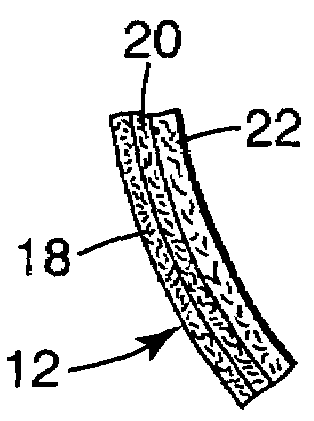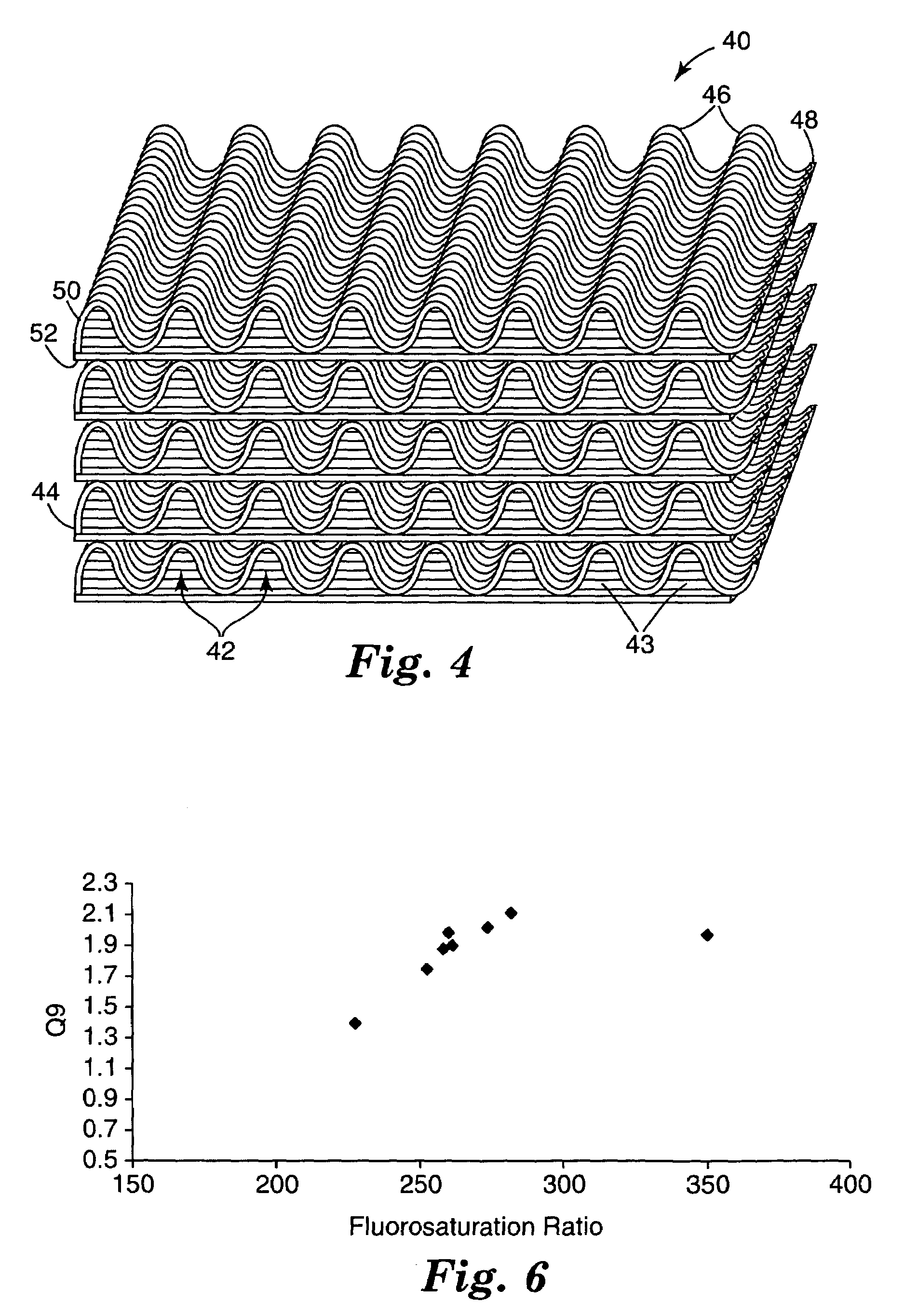Electret article having high fluorosaturation ratio
a technology of fluorosaturation ratio and electret filter, which is applied in the direction of filtration separation, separation process, instruments, etc., can solve the problems of electret filter losing the electret-enhanced filtering efficiency, the electret filter frequently being loaded, and the electret filter being frequently loaded, so as to improve the filtration efficiency. , the effect of increasing the thermal stability
- Summary
- Abstract
- Description
- Claims
- Application Information
AI Technical Summary
Benefits of technology
Problems solved by technology
Method used
Image
Examples
examples
[0097]The following Examples have been selected merely to further illustrate features, advantages, and other details of the invention. It is to be expressly understood, however, that while the Examples serve this purpose, the particular ingredients and amounts used as well as other conditions and details are not to be construed in a manner that would unduly limit the scope of this invention.
General Web Making, Plasma Treatment, and Electret Charging Procedures
[0098]Blown microfiber (BMF) webs used in the examples were prepared from polypropylene (Fina EOD 97-13 polypropylene resin available from Total Petrochemicals USA, Inc., Houston, Tex.) and had effective fiber diameters of approximately 7.5 μm, a basis weight of 62 g / m2, and a web solidity of 6%. Webs were prepared as generally described in Wente, Van A., Superfine Thermoplastic Fibers, Industrial Eng. Chemistry, Vol. 48, pp. 1342-1346.
[0099]BMF webs were plasma treated using one of two methods, denoted as Plasma Treatment Meth...
examples 1 , 2 , 3
Examples 1, 2, 3, and 4
[0105]BMF webs as described in the “General Web Making and Treatment” section were prepared using Plasma Treatment Method B, employing plasmas of various compositions. Plasma treated webs were electret charged using Hydrocharging Method A. Sample preparation conditions—including fluorine containing species gas, fluorine species blend ratio, exposure time, total plasma energy, and gas flow rate—are given in Table 4 with corresponding values for the resulting atomic % fluorine (APF), saturated / unsaturated ratio (SUR), fluorosaturation ratio (FSR), and the thermal stability quality factor (Q9) given in Table 5.
examples 5 , 6 , 7 , 8
Examples 5, 6, 7, 8
[0106]BMF webs, as described in the “General Web Making and Treatment” section, were prepared using Plasma Treatment Method A and Hydrocharging Method B, employing plasmas of compositions of a gas blend of vol. 5% F2 and 95% vol. He. After a specified duration of time the chamber was de-energized and purged, and the sample was removed. The sample was then placed back into the chamber with the side treated in the first stage placed down on the energized plate. The process repeated.
[0107]Sample preparation conditions—including fluorine containing species gas, fluorine species blend ratio, total exposure time, and total plasma energy—are given in Table 4 with corresponding values for the resulting atomic % fluorine (APF), saturated / unsaturated ratio (SUR), fluorosaturation ratio (FSR), and the thermal stability quality factor (Q9) given in Table 5.
Comparative Examples 1c, 2c, 3c, 4c, 5c, 6c, 7c, 8c, and 9c
[0108]BMF webs, as described in the “General Web Making and Tr...
PUM
| Property | Measurement | Unit |
|---|---|---|
| diameter | aaaaa | aaaaa |
| volume resistivity | aaaaa | aaaaa |
| thickness | aaaaa | aaaaa |
Abstract
Description
Claims
Application Information
 Login to View More
Login to View More - R&D
- Intellectual Property
- Life Sciences
- Materials
- Tech Scout
- Unparalleled Data Quality
- Higher Quality Content
- 60% Fewer Hallucinations
Browse by: Latest US Patents, China's latest patents, Technical Efficacy Thesaurus, Application Domain, Technology Topic, Popular Technical Reports.
© 2025 PatSnap. All rights reserved.Legal|Privacy policy|Modern Slavery Act Transparency Statement|Sitemap|About US| Contact US: help@patsnap.com



